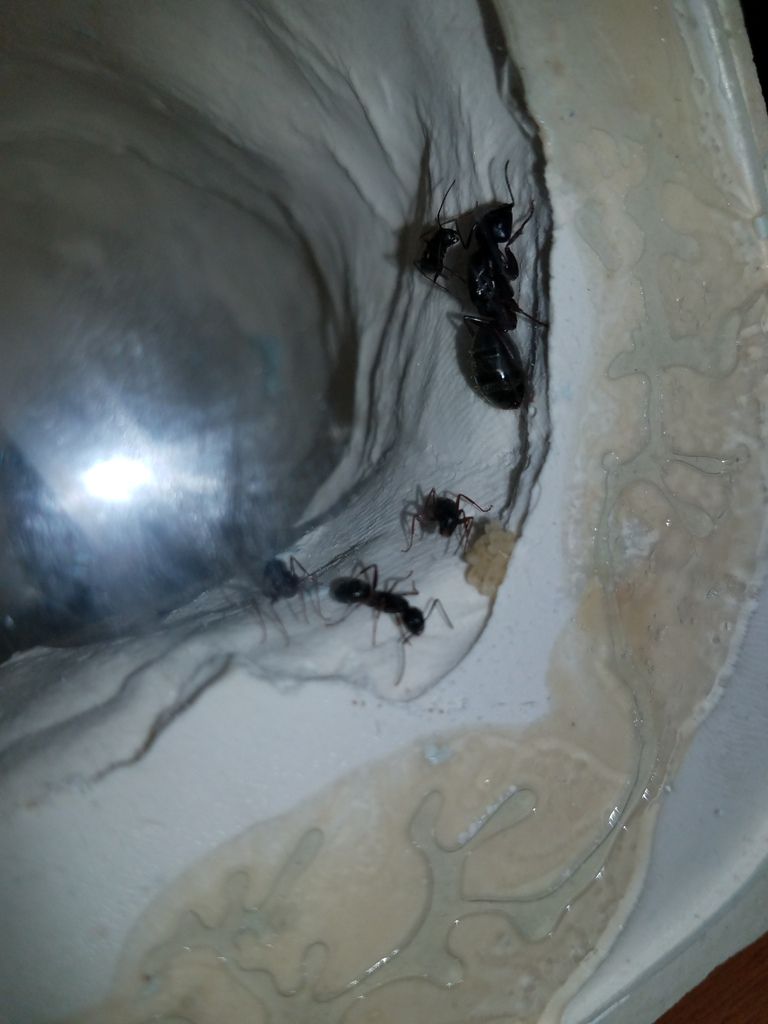C. Modoc was my guess as well. the differences are subtle, but these two species from what i have seen are so close. ill go ahead an leave the full description to make this easier
Location of collection Little Cottonwood Canyon Utah (Just outside of Salt Lake)
2. Date of collection : May 23rd 2017
3. Habitat of collection : Forest. Found in a fallen tree soaking in run off. Wood very wet to the touch. Three Colonies Nesting together is close proximity. Collected all three queens and as many of the workers / brood as possible.
4. Length : Queen 14mm. Workers (Minor) : 6mm
5. Coloration, hue, pattern and texture Black ants. head and thorax dull black. Gaster is a shimmering black due to hairs. gaster also has a striped pattern. legs are a deep Red.
6. Distinguishing characteristics : one petiole node, no spines, Thorax is gracefully curved in an arc. Head size varies between queens, major workers and minor workers. Head shape also varies a bit between Majors/Queens/ Minors. minors have a thin ovalish shape, while the Queen and majors have a shape that is similar with the Camponotus Genus.
7. Anything else distinctive : These colonies where nested very close to one another. these colonies may have even shared some tunneling in the tree they where found in, but that is not a certain thing. Three difference queens of the same species where collected. one queen was positioned closely to the other two colonies in her own chamber no workers only brood in egg stage. Another queen, brood in larva stage with 4 - 8 workers. my guess is that she is just starting her second year. the third and final queen had about 50 workers, probably just beginning year 3. majors present in this colony.
8. Nest description : See above.
9 . Pictures : This is of the year 2 colony

Edited by ragingbananas, May 26 2017 - 2:25 PM.
-Don
I am a new ant keeper
Tetramorium sp e - 30 Workers
Camponotus modoc - Captured colony (6 workers and brood)
Camponotus laevigatus - 3 Workers & Brood
Camponotus essigi - 4 workers & Brood
Pogonomyrmex barbatus - founding Stage



















